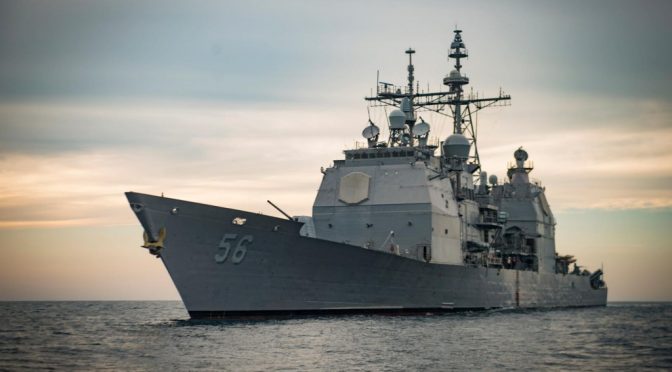By Bob Hein
The U.S. Navy provides the maritime superiority required to keep the homeland safe, preserve global influence, deter aggression, and win the Nation’s wars. Ever since the Spartans and the Romans put to sea, nations have understood the two fundamental purposes of Navies: secure their borders and protect commerce. The U.S. Navy accomplishes this for the preeminent global power as the nation’s persistent, forward, and ready force. The Navy secures not just U.S. trade, but ensures the international free flow of commerce, enables access to global markets, and assures our partners and allies while deterring potential adversaries.
The Navy and Marine Corps team operates cooperatively throughout the world’s oceans, both as a deployable naval force and from forward expeditionary bases supporting major combat operations. In today’s dynamic security environment, with multiple challenges from rising powers and belligerent state and non-state actors fed by social disorder and political upheaval, the requirement for a persistent, forward, and ready force is more essential than it has been for over two decades.
The Navy provides immediate options for the President and national security leadership to influence and respond to any contingency through a persistent forward force that is both scalable and immediately available. The Navy maintains the most survivable leg of our nation’s nuclear deterrent force and demonstrates American leadership by operating with our allies and partners for assurance and deterrence yet retaining the freedom to act unilaterally.
However, there are still obstacles to overcome. Due to years of reduced budgets, the Navy faces challenges across its three primary fiscal pillars: capability, capacity and readiness. The Navy’s recently communicated realization to refocus on sea control will require new weapons and systems to counter technologically advancing adversaries. The Navy’s recent announcement of the need for 355 ships to meet the demands of the combatant commander cannot overshadow the need to ensure those ships have the capabilities they need from weapons to air wings to trained sailors. The final pillar, readiness cannot be neglected. A fleet without the spare parts, ammunition, trained technicians and operators will not provide the credible deterrence force the Nation deserves. The Administration has expressed its desire for a larger fleet. This will unquestionably provide thousands of new jobs, hopefully we can turn vision into reality.
Captain Robert N. Hein is a career Surface Warfare Officer. He previously commanded the USS Gettysburg (CG-64) and the USS Nitze (DDG-94). You can follow him on Twitter: @the_sailor_dog. The views and opinions expressed are his own and do not reflect those of the Navy or the Department of Defense.
Featured Image: USS San Jacinto. (Photo: U.S. Navy)

